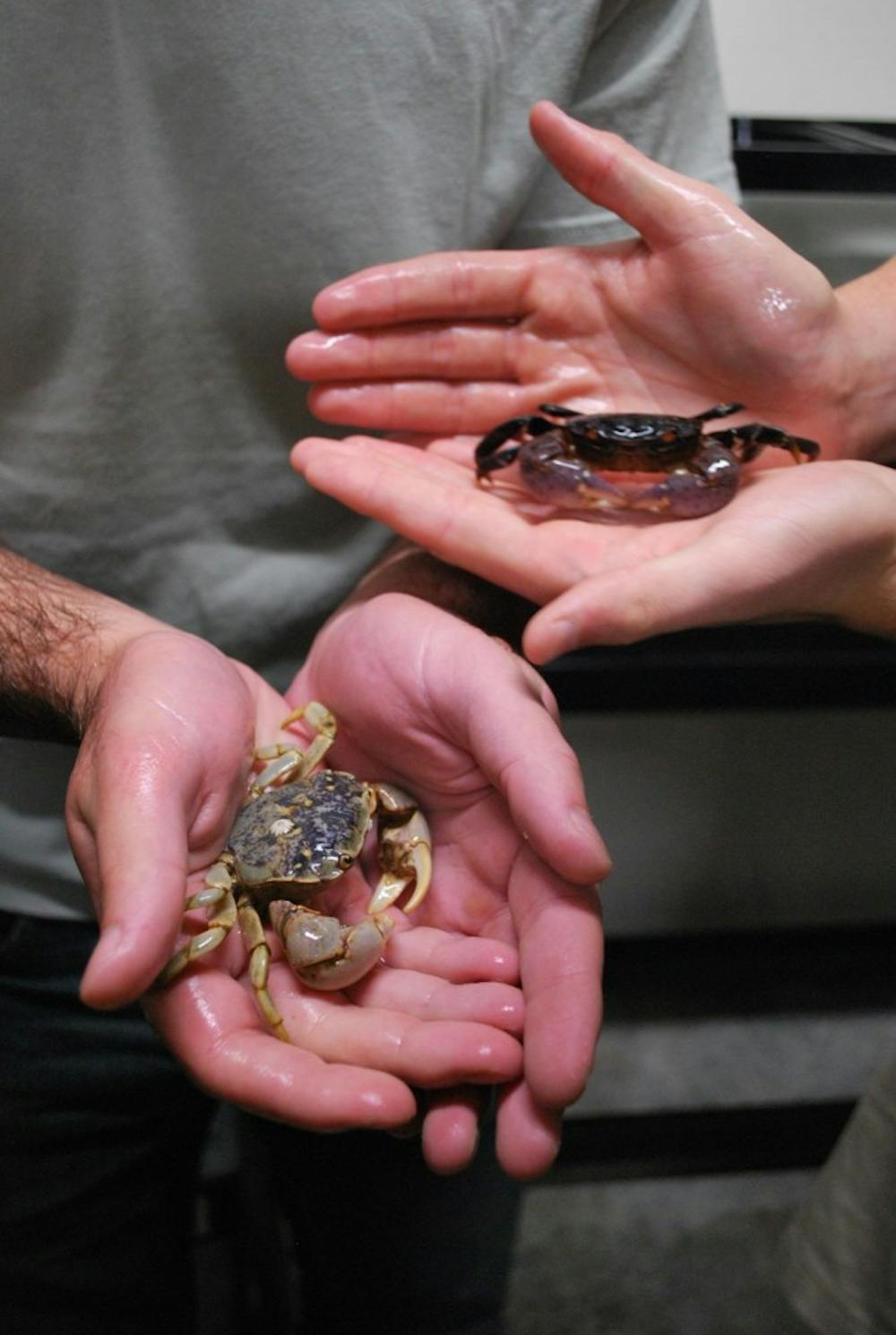Professor Maginnis and students research crab leg regeneration and behaviors
(-- The Beacon)
By Rachel McIntosh Staff Writer mcintosh14@up.edu
Two students from UP have taken their marine biology class to the next level as they participate in a research project to examine how crabs re-grow limbs and how aggression plays a role in the mating process.
Biology professor Tara Maginnis received start-up funds from the UP College of Arts and Sciences and will apply for the Murdock Life Science Grant this month.
Faculty in the college have received grants to initiate more undergraduate research studies, and the Murdock grant, which is given to organizations to support student scientific research. Maginnis' goal is to see if limb regeneration can be quantified, meaning the number of times a limb can regrow, the amount of time it takes and the energy cost of the animal's leg regrowth.
"Animals have a finite amount of resources they can spend – I'd like to know how they decide to spend where they spend," Maginnis said. "Similarly, what's so expensive about missing a leg that an animal puts all that effort into regeneration?"
The use of crabs for the research is based on their ability to regenerate legs and their physiological tolerance. Because the animals would be surviving in an artificial sea water environment, Maginnis needed an animal like the crab to be able to survive and be resilient.
Another aspect of Maginnis' research is ethology, the study of the crabs' behavior in regard to their aggression in reproduction, territoriality and feeding. Maginnis' two research assistants, Masis Isikbay, a junior, and Spencer Degerstedt, a senior, have been focusing on that aspect of the research. Isikbay and Degerstedt have been working since May, collecting data and maintaining the health of the crabs.
"We studied the aggression of crabs by video-taping them at night," Degerstedt said. "We used red lamps at night because we can see them but they can't perceive that light so it was like they were in darkness. We wanted to compare aggression levels between green line shore crabs that were ‘pregnant.'"
During their time in the lab this summer, Isikbay and Degerstedt helped renovate the growth chambers in Swindells Hall and establish a salt water system. They had two 200-gallon tanks for cultivating salt water environments for the crabs, and 24 individual 10-gallon tanks that housed the five different species of crabs. They collected a total of 400 crabs that they separated by gender.
"While we are still in the process of data analysis, it seems initially as though larger individuals are more aggressive than smaller ones," Isikbay said in an email. "In addition, there is variation between species (for example the green line shore crab is more aggressive than the purple shore crab)."
Allowing students to participate in research with faculty members allows them to experience firsthand each step of the scientific process.
"First of all, I am in love with crabs now," Degerstedt said. "I haven't eaten crab since I started working in the lab. But I learned that quantifying animal behavior presents unique challenges, especially in manufacturing experimental methods that eliminate variables. The elimination of these variables is paramount in isolating specific behaviors through which to draw certain conclusions about evolutionary tradeoffs."
The crab lab will have an open house on Thursday, Sept. 29 from 12:30 to 6 p.m. students and faculty can get an inside look at the research. The lab is located on the first floor of Swindells Hall in rooms 128 and 139.








